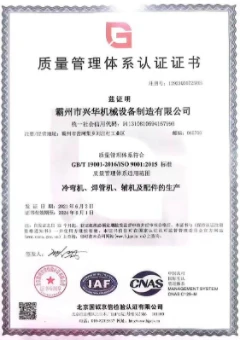roll straightening
Understanding Roll Straightening A Key Process in Metal Fabrication
Roll straightening is a crucial process in the metal fabrication industry, serving as an essential technique for correcting distortions in materials, particularly long and flat metal sections. This method is widely used to produce high-precision metal products that meet stringent quality specifications required in various applications, from automotive to aerospace and construction. In this article, we will delve into the concept of roll straightening, its principles, benefits, and applications.
What is Roll Straightening?
Roll straightening is a mechanical process employed to rectify the curvature or bend in metal materials, restoring them to a straight form. The process entails passing the material through a series of rollers, which exert pressure on the metal. This controlled deformation counteracts the internal stresses and warps that may have occurred during manufacturing, cutting, or machining processes. The goal is to achieve a uniform straightness, commonly measured in terms of deviation from a straight line over a specified length.
Principles of Roll Straightening
The effectiveness of roll straightening relies on a few fundamental principles
1. Material Properties Different metals respond differently to bending and straightening. Understanding the material's yield strength, ductility, and elastic limits is crucial in selecting the appropriate parameters for the straightening process.
2. Roller Configuration The design and arrangement of the rollers are key to achieving the desired straightness. Rollers can vary in diameter and spacing, and their configuration can be tailored to suit specific material types and geometrical requirements.
3. Control of Forces Roll straightening machines utilize hydraulic or mechanical systems to control the amount of pressure applied to the metal as it passes through the rollers. Precise control of these forces is essential to avoid over-straightening, which could lead to further distortion.
4. Sequential Operations The process may involve multiple passes through different sets of rollers, progressively reducing the curvature. Each pass gradually aligns the material, allowing for finer adjustments as the desired straightness is achieved.
Benefits of Roll Straightening
Roll straightening offers several advantages that make it a preferred choice in metal processing
roll straightening

1. Enhanced Precision This method provides a high degree of accuracy in straightening, crucial for applications requiring tight tolerances. Straightened materials contribute to better fitting and assembly in finished products.
3. Economic Efficiency Roll straightening can enhance production efficiency by reducing scrap rates. Materials that are straightened may utilize more of the initial mass, leading to less waste and more cost-effective manufacturing.
4. Versatility The process is adaptable to a wide range of materials including steel, aluminum, and other alloys. From large structural beams to thin-walled sections, roll straightening can accommodate various shapes and sizes.
Applications of Roll Straightening
Roll straightening is utilized across multiple industries. For instance
- Automotive Industry Straightened metal parts are critical in ensuring the structural integrity and safety of vehicles. Components such as frames, axles, and suspension elements often undergo roll straightening.
- Aerospace Precision is paramount in aerospace manufacturing. Roll straightening is employed to ensure that aircraft components conform to exact specifications, maintaining performance and safety standards.
- Construction In construction, roll straightened materials like beams and columns ensure sound structural support. Accurate dimensions prevent alignment issues during assembly.
- Manufacturing of Appliances Household appliances often rely on straightened metal components for both functionality and aesthetics, ensuring that parts fit together seamlessly.
Conclusion
In summary, roll straightening is an integral part of metal fabrication that enhances the quality and performance of various products. By using a series of rollers to correct distortions, this method not only improves precision but also contributes to the structural integrity of metal components used in diverse industries. As the demand for high-quality manufactured products continues to grow, roll straightening will undoubtedly remain a key process in meeting these requirements.
-
High Frequency Straight Seam Welded Pipe Production Line-BzZhou Xinghua Machinery Equipment Manufacturing Co., LTD.|line pipe steel&welded gas pipeNewsJul.30,2025
-
High Frequency Straight Seam Welded Pipe Production Line-BzZhou Xinghua Machinery Equipment Manufacturing Co., LTD.|High Precision&Automated SolutionsNewsJul.30,2025
-
High Frequency Straight Seam Welded Pipe Production Line - BzZhou Xinghua Machinery Equipment Manufacturing Co., Ltd.NewsJul.30,2025
-
High Frequency Straight Seam Welded Pipe Production Line-BzZhou Xinghua Machinery Equipment Manufacturing Co., LTD.|Precision Welding, High EfficiencyNewsJul.30,2025
-
High Frequency Straight Seam Welded Pipe Production Line|BzZhou Xinghua|Precision Welding&EfficiencyNewsJul.30,2025
-
High Frequency Straight Seam Welded Pipe Production Line - BzZhou Xinghua|Precision Engineering&EfficiencyNewsJul.30,2025


